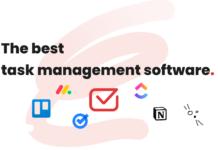
Retirement income may come from Social Security benefits, a variety of tax-advantaged sources, such as an individual retirement account (IRA), a Roth IRA, a 401(k), and, if you are one of the lucky ones, a pension plan.
A person may be able to choose the investments made with funds set aside in some of their retirement accounts. Having a diversified portfolio is an investment strategy for managing risk and, hopefully, making a return on investment over the long term.
Achieving a Balanced Diversified Portfolio
The investment strategy of diversification is to balance a portfolio with investments in different categories that may offset each other. Hopefully, if one type is in a losing position, this loss is counterbalanced by holding a winning position in other investments.
How can you diversify?
The options are to manage this effort directly or use the advice of a system or a financial professional to help with diversification.
For self-starters and do-it-yourself types, such as those with a self-directed 401(k), consider diversification with these investment categories:
- Stock Index Funds: These funds have risk spread across many companies.
- Alternative Investments: Ensure your portfolio includes alternative investments that are outside the norm.
- Non-Correlated Investments: Consider having a portion of your portfolio holding investments not influenced by the stock market.
Stock Index Funds
Investing in an index fund is possible by selecting a mutual fund designed to track a specific index or by investing in an exchange-traded fund (EFT) that tracks a stock index. Making such an investment provides instant diversification without further effort. An investor may want to consider more than one index fund and have some investment exposure in different countries.
Examples of a stock index in the USA are the S&P 500, the Dow Jones Industrial Average, or the Nasdaq Composite. In other countries, the stock indices include the FTSE 100 (London), the NIKKEI 225 (Japan), the Hang Seng (Hong Kong), Dax (Germany), and others.
The differences of concern to investors between a mutual fund and an EFT are the fees and the liquidity. Mutual funds usually have higher fees and are less liquid than EFTs. EFTs are popular for the lower fees and the high liquidity of easy trading on an exchange. However, there may be commission fees for buying and selling EFTs. Investigate all the fees because high fees can seriously lower an investment’s performance.
Over a long time horizon, stock index funds have, in the past, tended to go up. However, there have been some years with a major downside correction. An investment period for retirement is 20, 30, or 40 years. Hopefully, the down years will be limited to two or three serious corrections. The good years make up for those bad years if the stock market rebounds over time, even if it takes a decade.
Investing in an index fund is easier than choosing several individual companies’ stocks. There is no need to track each company’s performance with an index fund. Returns will be average; however, this is preferable to losing all the investment funds in a single bad stock.
Alternative Investments
Alternative investments include real estate, cryptocurrencies, commodities, hedge funds, venture deals, private equity, and private debt.
Real Estate
Real estate investing may take many forms. There is direct ownership of property alone or with other investors as partners. There are development deals. There are real estate investment trusts (REITs), and some trade on the stock market. A REIT must pay 90% of its profits each year to its investors as dividends.
Cryptocurrencies
Cryptocurrencies are a newer investment vehicle that has gone mainstream over the last few years. These investments are extremely volatile and not for investors who have an aversion to risk. Nevertheless, having a small portion of a retirement portfolio exposed to cryptocurrencies may be a reasonable investment strategy.
Commodities
Commodities are interesting in periods of high inflation because they may be the drivers of inflation and a source of investment returns for skilled traders. Typically, commodities prices will go up in lock-step with inflation and perhaps more, depending on the commodity type. For this reason, commodities might help deal with inflation.
There are EFTs for commodities worth considering depending on the inflation rate and scarcity of the item.
Hedge Funds
Hedge funds are a huge pool of investor money managed for specific portfolio goals. Hedge funds may use complex trading systems. Investments may include put and call options, short-selling, derivatives such as credit-default swaps (CDRs), and other exotic investment instruments. These investments are usually not accessible to a modest individual investor.
Some hedge funds only accept accredited investors with a net worth above $1 million. Other hedge funds trade on the stock market like other EFTs.
Hedge funds may perform well one year and be a big loser the following one. The rare hedge funds are consistently good at beating the stock market’s average returns.
Venture Deals
A venture deal is speculative investing in startup companies by high net-worth investors and venture funds. These investments may be losers nine times out of ten. However, one winner out of ten might be a huge success for investors who choose their startup companies well.
Private Equity and Private Debt
The distinction here is that these investments are not in publicly-traded companies. If the investment performs well, the returns may be substantial. Earned interest rates may be higher for private debt. Equity returns may come from an initial public offering (IPO) of the company’s stock.
Non-Correlated Investments
The stock market’s performance does not affect the investment returns for non-correlated assets. Examples in this category are fine art by major artists, restored vintage cars, and other collectibles that continue to go up in price over time due to their rarity and strong appeal to collectors.
Final Thoughts
A diversified portfolio may need rebalancing at the end of each year to make sure the portfolio’s holdings by percentage remain in alignment with an investor’s goals. Using a long-term, buy-and-hold strategy is the easiest way to avoid unwarranted emotional selling at a loss during a market correction that can reduce long-term portfolio returns.











